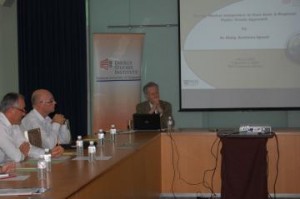 On 7th March 2012 Philip gave a talk at the Energy Studies Institute of the National University of Singapore on the subject of Energy Market Integration in East Asia. The talk drew on a report he wrote last year for the Economic Research Institute for ASEAN and East Asia.
On 7th March 2012 Philip gave a talk at the Energy Studies Institute of the National University of Singapore on the subject of Energy Market Integration in East Asia. The talk drew on a report he wrote last year for the Economic Research Institute for ASEAN and East Asia.
The integration of energy markets across the region is one of the three major priorities for regional energy collaboration identified by the EAS (East Asia Summit) Energy Ministers. Energy market integration (EMI) would enhance security of energy supply, economic efficiency within the energy sector, social equity and environmental protection. This study applies a regional public goods approach to the analysis of EMI in East Asia in order to clarify the outlook for such integration and the likely obstacles to be encountered. It also draws on the experience of the European Union. The study shows that many services are needed in order to develop and sustain an integrated regional energy market and that some of these services have the characteristics of regional public goods, though some may be trans-regional or global in nature as well. It is recommended that EMI in East Asia should be pursued in an incremental manner and mainly at a sub-regional scale initially, and that specific steps towards EMI be chosen on the basis of their likely positive impacts and their likely ease of delivery. Existing low-cost initiatives include research and development, technical standards, sharing best practices, and data analysis and dissemination. Networks of natural gas pipelines and electricity grids should be given high priority, but these require transparency and effective governance on the part of individual states. Other possible measures include sea-lane security and capacity for both emergency response and pollution clean-up.
To see the presentation slides, please click here.

